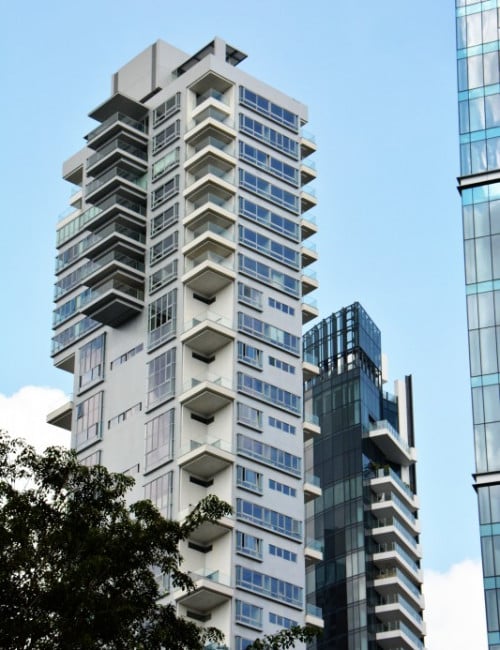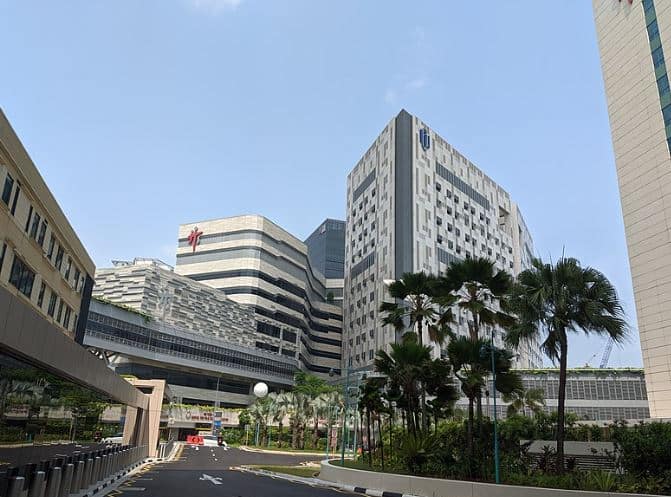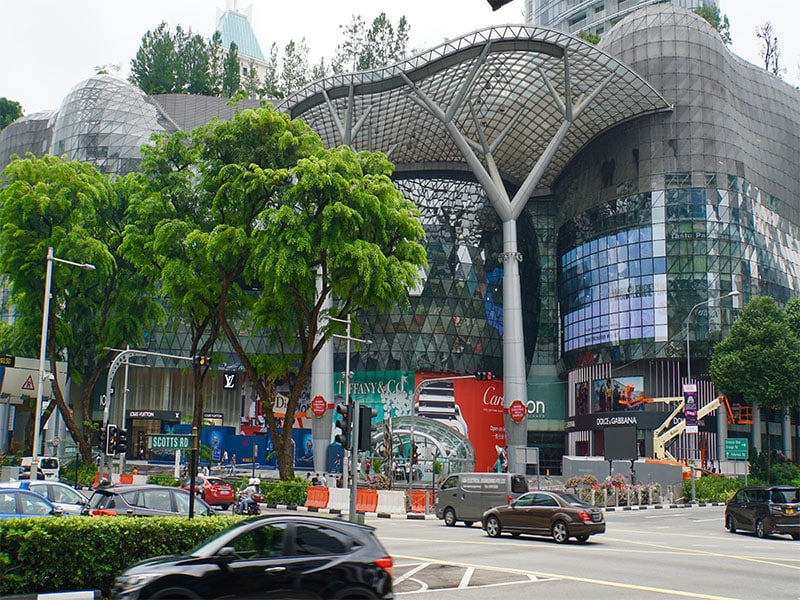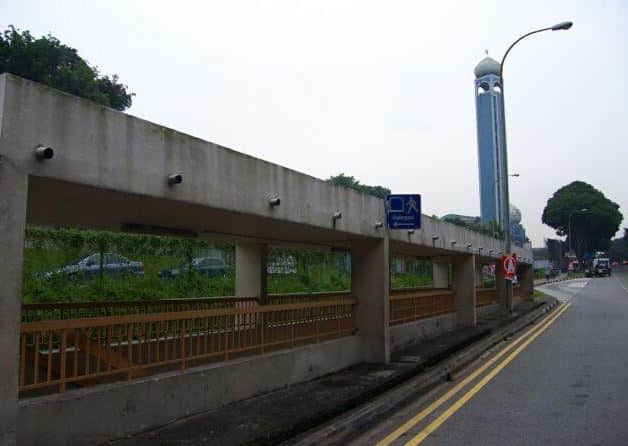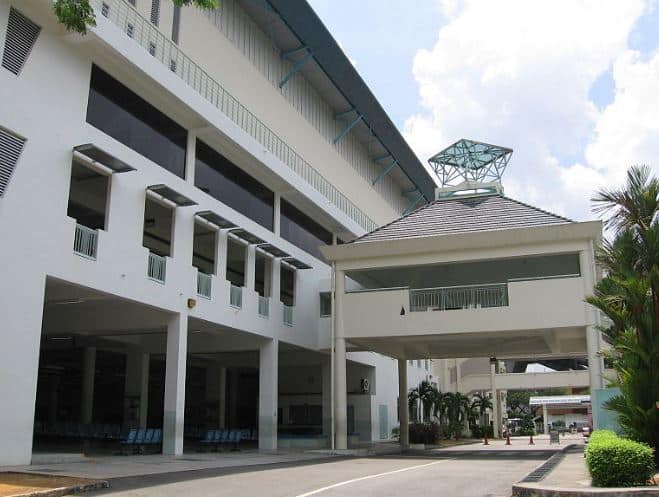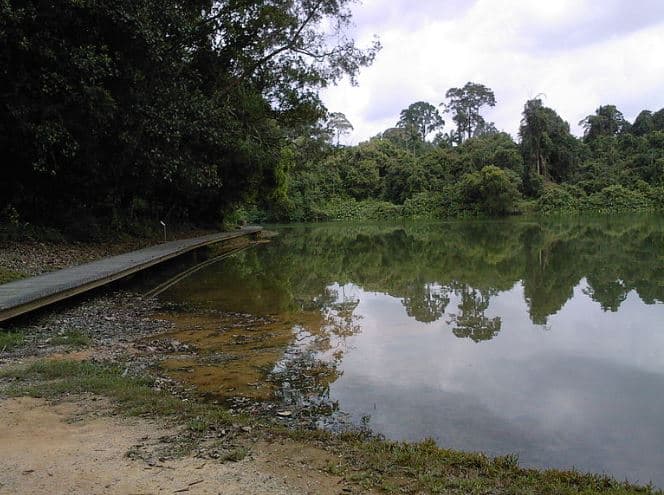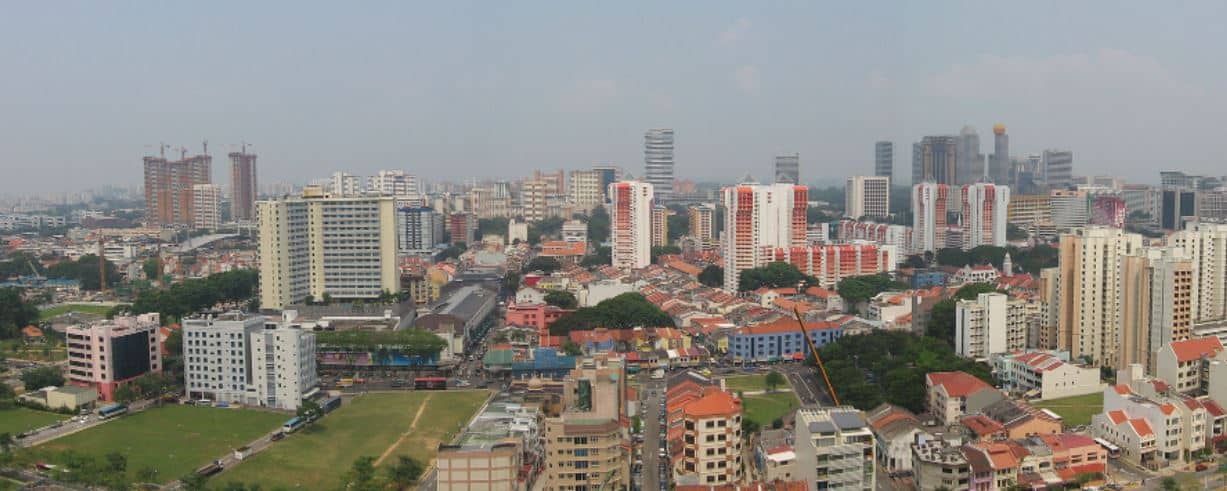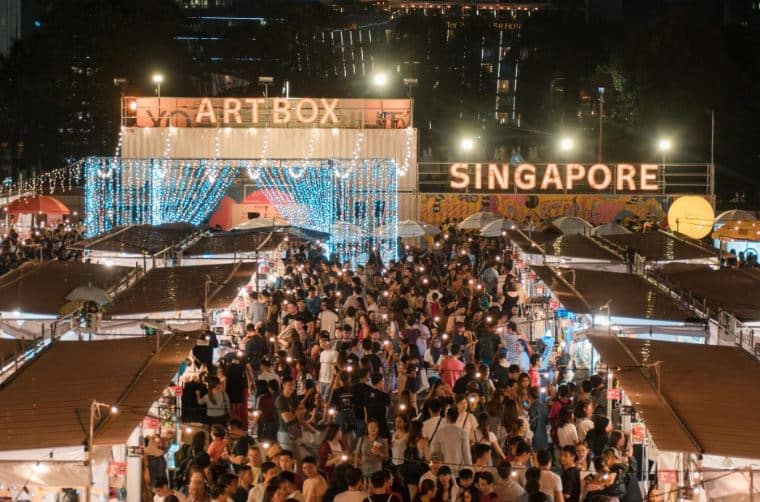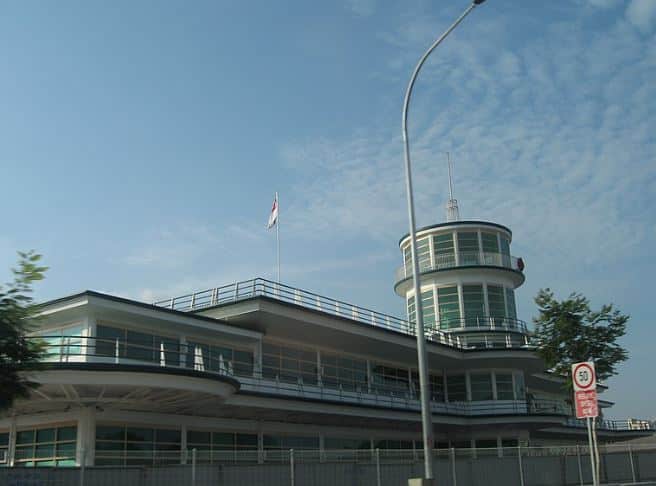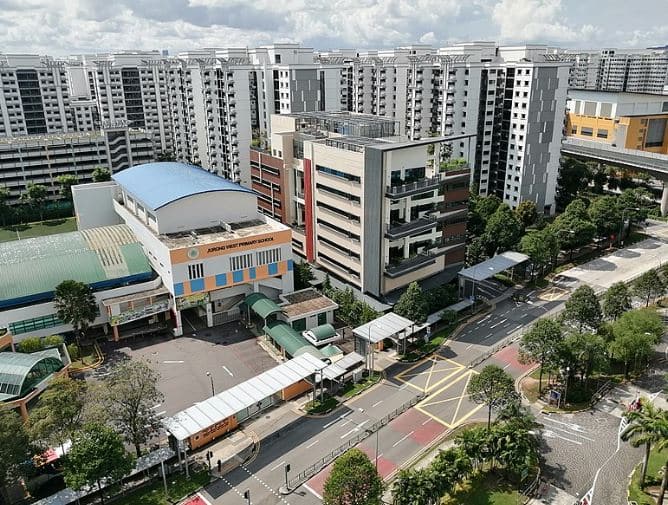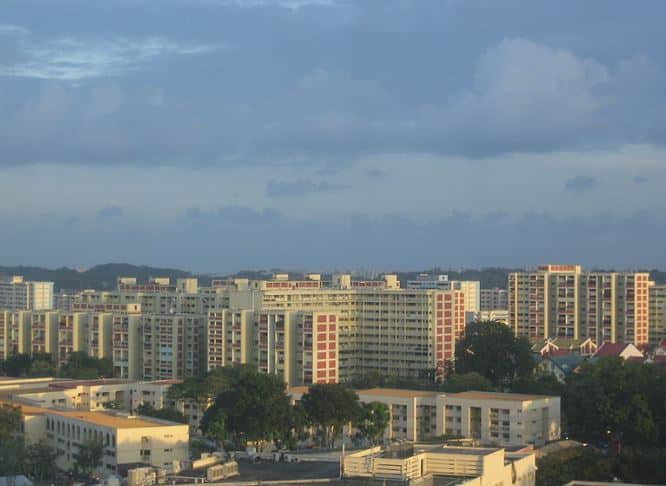Discover the Coolest Neighbourhoods in Singapore: Guide to Districts, and Property
We will take you on a journey through some of the most popular areas of Singapore, each offering its own unique charm and flavor.
Orchard Neighbourhood
Orchard Neighbourhood is in the Central part and a famous attraction in Singapore where upscale shopping centers, restaurants, and stores are located.
Novena Neighbourhood
Novena Neighbourhood is within Singapore’s Central Region that can be accessed by MRT. Some of its neighboring towns are Toa Payoh and Kallang.
Newton Neighbourhood
Newton Neighbourhood is a planning area within the Central Region of Singapore near Novena and Tanglin Towns. It mostly caters to expatriate families.
Marsiling Neighbourhood
Marsiling Neighbourhood is a suburb of Woodlands and has a denser estate in Singapore than nearby areas. It offers several housing options as well.
Marine Parade Neighbourhood
Marine Parade Neighbourhood is in Central Region bordering Geylang and Bedok with public and private housing flats and a community building.
Macritchie Reservoir Neighbourhood
Macritchie Reservoir Neighbourhood is next to Lornie Highway near Opp Road and Thomson Road, with bus networks and MRT stations nearby.
Little India Neighbourhood
Little India Neighbourhood is in the east of the Singapore River, just across from Chinatown is an ethnic district and home to most Indian ethnic communities.
Kranji Neighbourhood
Kranji Neighbourhood is 22 kilometres from the city center and is in the northwestern part of Singapore. It is a suburban area near Turf Club and Sungei Kadut.
Kallang Neighbourhood
Kallang Neighbourhood is a residential town in the Central Region of Singapore around the Kallang River, with its nearby towns like Geylang and Marine Parade.
Jurong West Neighbourhood
Jurong West Neighbourhood shares boundaries with Jurong East, Pioneer, Tengah, and Boon Lay. It is a residential town with rapid development in the area.
Jurong East Neighbourhood
Jurong East Neighbourhood in Singapore’s West Region is a residential town and planning area bordered by Clementi to its east. It comprises of 10 subzones.
Hougang Neighbourhood
Hougang Neighbourhood is a residential town in the North-East Region bordered by Serangoon to the south. It has eight shopping malls and public housing flats.
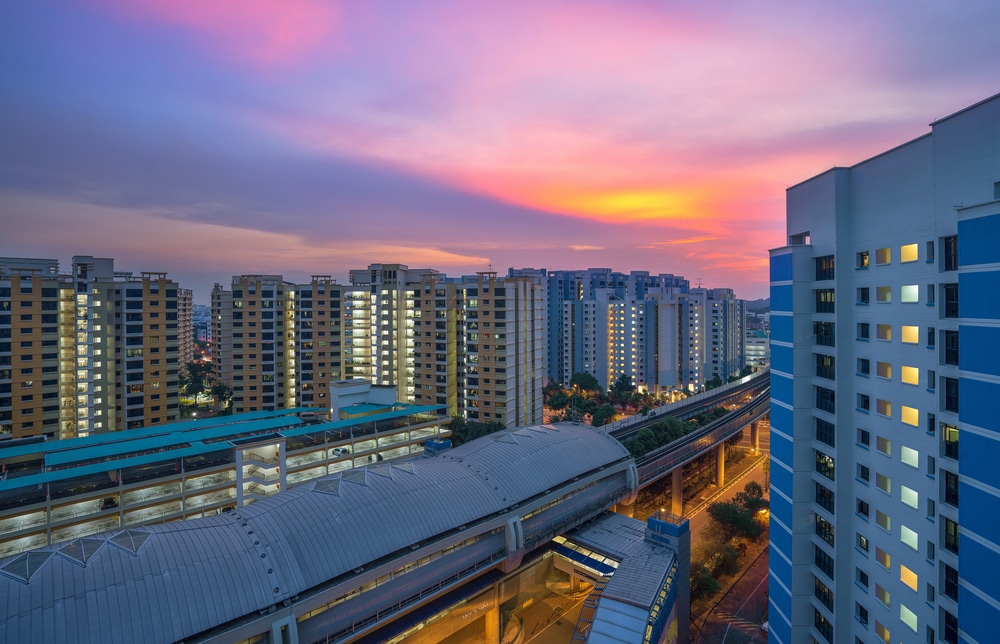
Explore the vibrant neighborhoods of Singapore!
From the cultural haven of Little India to the modern marvels of Marina Bay, each district has its own unique charm and attractions.
Whether you’re a foodie, a nature lover, or a shopaholic, Singapore’s neighborhoods have something for everyone.
Key Takeaways
| Key Takeaway | Information |
|---|---|
| Singapore’s neighborhoods | Singapore is divided into various districts, each with its own unique character and charm, offering diverse experiences like shopping, culinary adventures, and peaceful oases. |
| Planning a visit | It is essential to plan your visit and decide which neighborhoods to explore in Singapore to make the most of your time in the city-state. |
| Residential areas | Singapore has residential areas that offer a glimpse into the local way of life, with trendy cafes, serene parks, and a mix of modern and traditional architecture. |
| Little India | Little India is a vibrant neighborhood that showcases Indian culture and heritage, featuring vibrant streets, the Sri Veeramakaliamman Temple, and delicious Indian cuisine. |
| Chinatown | Chinatown is a must-visit neighborhood known for its blend of Chinese traditions and modern attractions, including historic temples and authentic Chinese restaurants. |
| Katong | Katong combines heritage and natural beauty, featuring stunning shophouses, traditional eateries, and proximity to the picturesque East Coast Park. |
| Tiong Bahru | Tiong Bahru is a trendy neighborhood with a vibrant dining scene, trendy cafes, and boutiques, as well as a thriving art and culture scene and a laid-back lifestyle. |
| Robertson Quay | Robertson Quay is a popular dining destination by the Singapore River, offering a wide array of international restaurants and bars, with a relaxing waterfront atmosphere. |
| Orchard Road | Orchard Road is Singapore’s iconic shopping hub, featuring numerous shopping malls, luxury boutiques, and a gastronomic paradise with a wide range of cuisines. |
| Bukit Timah | Bukit Timah is known for its greenery and exclusive residential areas, including Bukit Timah Hill and the Bukit Timah Nature Reserve. |
| Chip Bee Gardens | Chip Bee Gardens is a charming enclave in Bukit Timah, featuring trendy cafes, boutique shops, and art galleries, creating a sense of community and tranquility. |
| Sentosa Island | Sentosa Island offers an island escape with world-class attractions, stunning beaches, and luxurious hotels, providing a range of activities and entertainment options. |
| East Coast | The East Coast is a popular neighborhood known for its beautiful beaches, parks, and leisurely lifestyle, with a mix of shophouses, hip cafes, and shops selling local delicacies. |
| Joo Chiat | Joo Chiat is a neighborhood within the East Coast known for its rich heritage, vibrant Peranakan culture, and beautifully preserved shophouses. |
| Kampong Glam | Kampong Glam offers a unique blend of old-world charm and contemporary attractions, with a rich heritage, vibrant Arab Street, and a range of modern shops and cafes. |
| Marina Bay | Marina Bay is an iconic neighborhood known for its landmarks and modern architecture, featuring Marina Bay Sands, Gardens by the Bay, and a blend of traditional and contemporary designs. |
| Singapore Botanic Gardens | The Singapore Botanic Gardens is a botanical paradise offering lush greenery, beautiful flowers, and the National Orchid Garden with its vast collection of orchids. |
| Bukit Merah | Bukit Merah embodies the blend of tradition and modernity in Singapore, featuring preserved heritage buildings, traditional shophouses, and a diverse mix of residential and commercial areas. |
| Tanglin Mall | Tanglin Mall is a vibrant shopping center in the Tanglin neighborhood, offering a wide range of shops and restaurants for both locals and tourists. |
| Family-friendly neighborhoods | Singapore has several family-friendly neighborhoods with good schools and amenities for parents and children, such as Telok Blangah, which features parks and playgrounds. |
Introduction to Singapore’s Neighborhoods
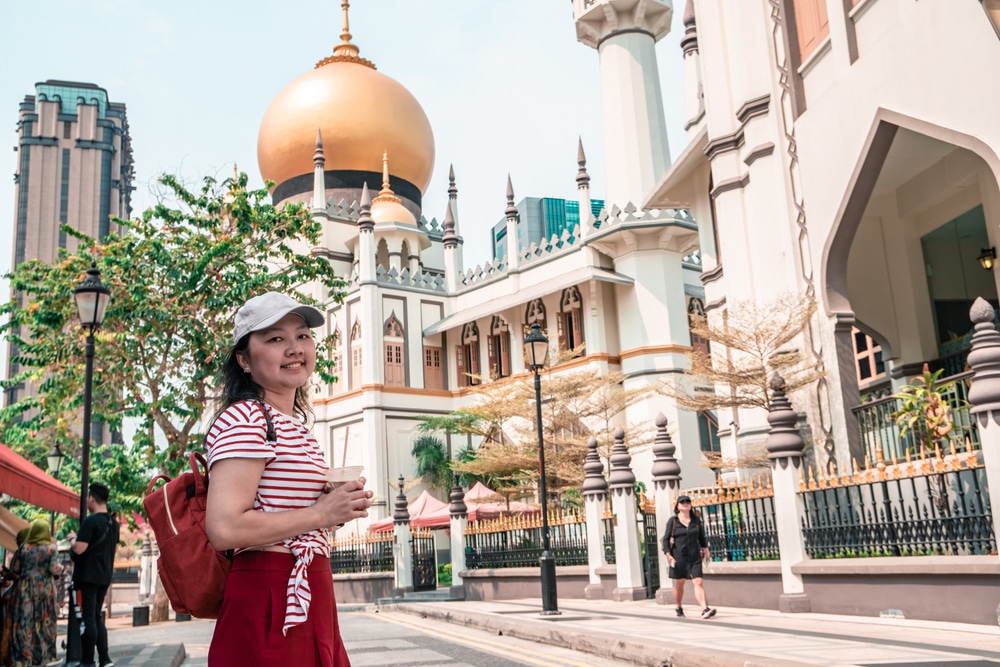
Discover the Diversity of Singapore’s Districts
Singapore is divided into various districts, each with its own unique character and charm.
Whether you’re looking for a shopping paradise, a culinary adventure, or a peaceful oasis, you’ll find it in the different neighbourhoods of Singapore.
Planning a Visit: A Guide to Singapore’s Neighbourhoods
Before you make your way to Singapore, it’s essential to plan your visit and decide which neighbourhoods to explore.
This guide will provide you with insights into the coolest neighbourhoods in Singapore, so you can make the most of your time in this vibrant city-state.
Exploring the Charm of Singapore’s Residential Areas
While Singapore is known for its towering skyscrapers and modern infrastructure, it also has various residential areas that offer a glimpse into the local way of life.
From trendy cafes to serene parks, these neighbourhoods are perfect for immersing yourself in the charm of Singapore.
Exploring the Rich Heritage and Culture of Singapore’s Neighbourhoods
Discover the Historical Gems in Little India
One of Singapore’s most vibrant neighbourhoods, Little India, is a melting pot of Indian culture and heritage.
Stroll through the vibrant streets, visit the iconic Sri Veeramakaliamman Temple, and indulge in delicious Indian cuisine at the local eateries.
Immerse Yourself in the Vibrant Culture of Chinatown
Chinatown is another must-visit neighbourhood in Singapore, where Chinese traditions and modern attractions coexist.
Explore the bustling streets, visit the historic Thian Hock Keng Temple, and enjoy a scrumptious meal at one of the many authentic Chinese restaurants.
Uncover the Serenity and Beauty of Katong
If you’re looking for a neighbourhood that combines heritage and natural beauty, Katong is the place to be.
This Peranakan enclave is known for its stunning shophouses, traditional eateries, and proximity to the picturesque East Coast Park.
Vibrant Dining Scenes: A Culinary Journey Through Singapore’s Neighbourhoods
Taste the Best Local Delicacies in Tiong Bahru
Tiong Bahru is a trendy neighbourhood that boasts a vibrant dining scene.
From local hawker fare to trendy cafes, this district has it all.
Try the famous Tiong Bahru Bakery, savor local delicacies at Tiong Bahru Market, and indulge in a refreshing cocktail at one of the stylish bars.
Experience a Gastronomic Adventure in Kampong Glam
Kampong Glam is a food lover’s paradise with its diverse range of culinary offerings.
From Middle Eastern delights to fusion cuisine, this neighbourhood has something for every palate.
Visit Arab Street for authentic Arab delicacies and explore Haji Lane for quirky cafes and eateries.
Indulge in International Flavors at Robertson Quay
Located by the banks of the Singapore River, Robertson Quay is a popular dining destination with a wide array of international restaurants and bars.
Enjoy a leisurely meal with a view, and then take a stroll along the waterfront for a relaxing experience.
The Charm of Tiong Bahru: A Hipster’s Paradise
Explore the Trendy Cafes and Boutiques in Tiong Bahru
Tiong Bahru is known for its trendy cafes and boutiques, making it a haven for hipsters.
Spend a lazy afternoon sipping artisanal coffee, browse local designer stores, and immerse yourself in the unique atmosphere of this neighbourhood.
Discover the Art and Culture Scene in Tiong Bahru
Tiong Bahru is not just about food and fashion, it also has a thriving art and culture scene.
Visit art galleries, attend creative workshops, and explore the beautiful street art that adorns the walls of this neighbourhood.
Experience the Laid-Back Lifestyle of Tiong Bahru
One of Singapore’s oldest housing estates, Tiong Bahru offers a laid-back lifestyle that is hard to find in the city center.
Enjoy leisurely walks along the tree-lined streets, relax in the local parks, and soak in the nostalgic charm of this unique neighbourhood.
Orchard Road: Singapore’s Iconic Shopping Hub
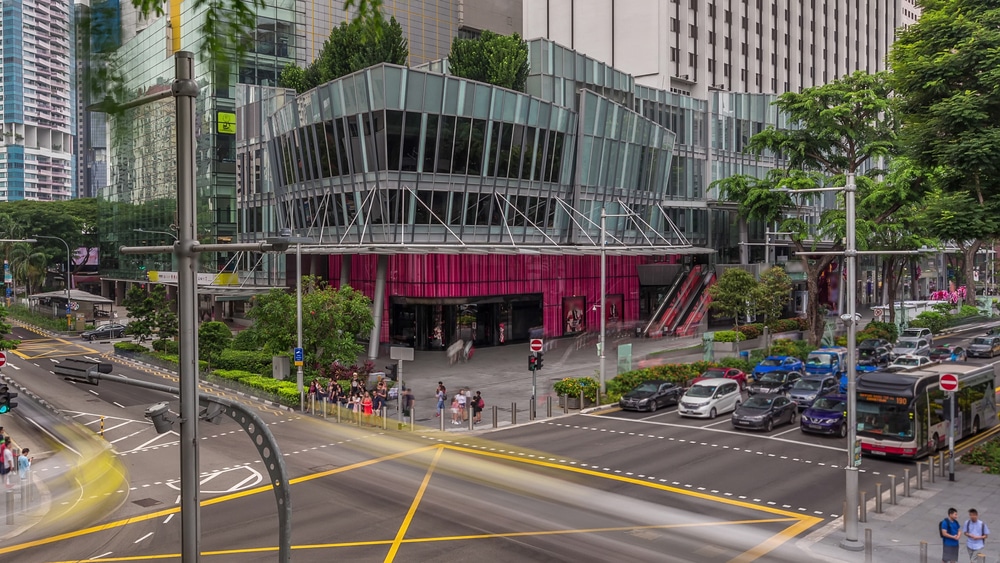
Shop Till You Drop at the Orchard Road Shopping Belt
Orchard Road is the ultimate shopping destination in Singapore, with a plethora of shopping malls offering everything from high-end fashion to electronics.
Indulge in retail therapy, explore luxury boutiques, and discover the latest fashion trends in this shopper’s paradise.
Experience Luxury at The Shoppes at Marina Bay Sands
For a truly luxurious shopping experience, head to The Shoppes at Marina Bay Sands.
This upscale mall offers a collection of international designer brands, stunning architecture, and waterfront views.
Enjoy a gourmet meal at one of the fine dining restaurants and take in the opulence of this iconic shopping destination.
Savour Exquisite Dining at Orchard Road’s Finest Restaurants
Orchard Road is not only a shopping hub but also a gastronomic paradise.
Indulge in a sumptuous meal at one of the many fine-dining restaurants offering a range of cuisines from around the world.
From Japanese sushi to Italian pasta, the dining options are endless.
East Coast: Beaches, Parks, and a Leisurely Lifestyle
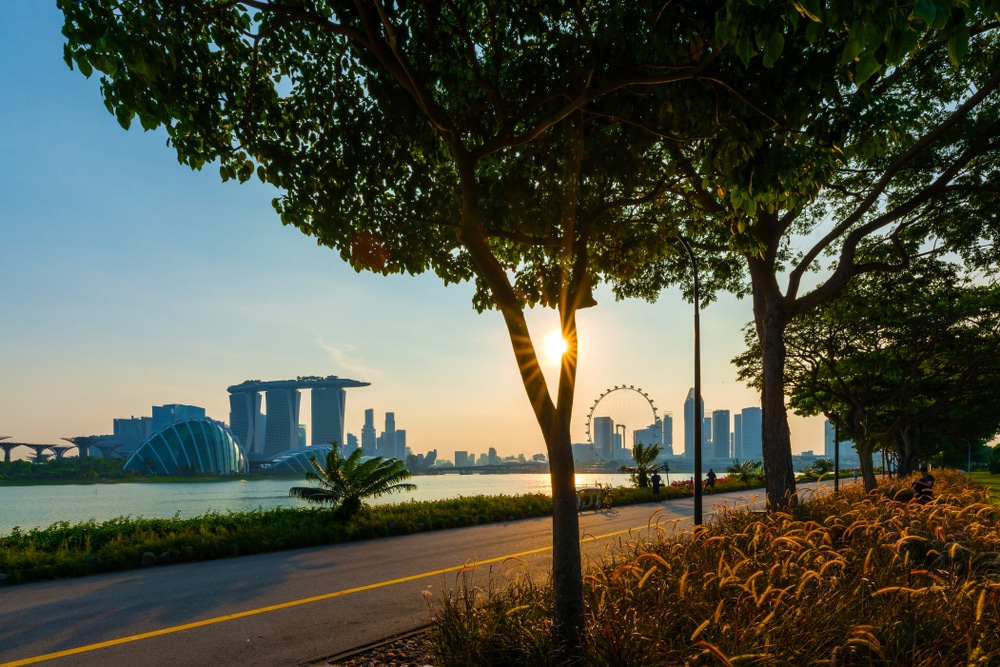
One of the most popular neighborhoods in Singapore, the East Coast is known for its beautiful beaches, parks, and leisurely lifestyle.
East Coast Road, the main street that runs through the area, is lined with a mix of charming shophouses, hip cafes, and shops selling everything from local delicacies to international cuisine.
Explore the Beautiful East Coast Road
Take a leisurely stroll along East Coast Road and soak in the ambiance of this vibrant neighborhood.
You’ll find a wide variety of shops, restaurants, and cafes to explore, offering everything from trendy fashion to authentic local dishes.
Discover the Tranquility of East Coast Park
For those looking to escape the hustle and bustle of the city, East Coast Park is the perfect oasis.
With its long stretch of sandy beaches, lush greenery, and stunning sea views, it’s a great place to relax and unwind.
Whether you’re cycling, jogging, or simply enjoying a picnic with family and friends, the park offers plenty of space for everyone to enjoy.
Enjoy the Leisurely Lifestyle in Joo Chiat
Joo Chiat is a neighborhood within the East Coast area that is known for its rich heritage and vibrant Peranakan culture.
The streets are lined with beautifully preserved shophouses in various shades of pastel colors, with intricate motifs and art deco designs.
Explore the charming streets of Joo Chiat and be transported back in time to a bygone era.
Kampong Glam: Where History and Modernity Collide
Kampong Glam is a neighborhood where history and modernity collide, offering a unique blend of old-world charm and contemporary attractions.
This vibrant district is home to the historic Sultan Mosque and the bustling Arab Street, where you can find a wide range of shops, restaurants, and hipster cafes.
Immerse Yourself in Kampong Glam’s Heritage
Step back in time and immerse yourself in Kampong Glam’s rich heritage.
Explore the narrow lanes and discover beautifully restored shophouses, filled with unique boutiques, art galleries, and traditional Malay handicrafts.
Experience the Buzz of Arab Street
Arab Street is the heart and soul of Kampong Glam, bustling with activity day and night.
Browse through the eclectic mix of shops selling textiles, carpets, perfumes, and traditional Arab costumes.
Indulge in authentic Middle Eastern cuisine at one of the many restaurants or grab a cup of coffee and soak in the vibrant atmosphere.
Discover the Modern Attractions near Kampong Glam
While Kampong Glam is steeped in history, it also offers a range of modern attractions.
Explore the nearby Haji Lane, a trendy shopping street known for its independent boutiques and quirky shops.
Visit the hip cafes and rooftop bars in the area, where you can enjoy stunning views of the city skyline.
Bukit Timah: Greenery and Exclusive Living
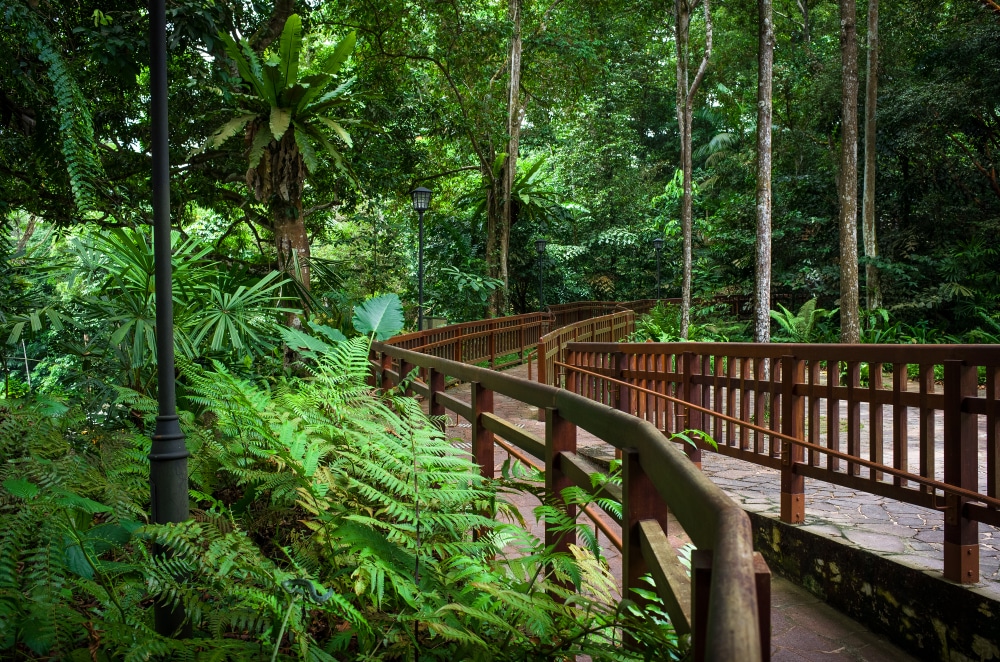
Located just outside the city centre, Bukit Timah is known for its lush greenery and exclusive residential areas.
This neighborhood is home to Singapore’s highest natural point, Bukit Timah Hill, and the beautiful Bukit Timah Nature Reserve.
Indulge in Nature at Bukit Timah Nature Reserve
Nature lovers will be delighted by the abundance of greenery and wildlife at Bukit Timah Nature Reserve.
With its well-preserved jungle and diverse range of flora and fauna, it’s the perfect place for hiking, bird-watching, and immersing yourself in nature.
Explore the Exclusive Residential Area of Bukit Timah
Bukit Timah is renowned for its exclusive residential properties, offering residents a peaceful and upscale living environment.
The neighborhood is dotted with luxury condos, beautiful landed properties, and private estates.
Discover the Local Charm of Chip Bee Gardens
Chip Bee Gardens, located in the heart of Bukit Timah, is a charming enclave that exudes a sense of community and tranquility.
This hidden gem is home to a mix of trendy cafes, boutique shops, and art galleries.
Take a leisurely stroll through the neighborhood and soak in its unique atmosphere.
Exploring Sentosa Island: An Island Escape in Singapore
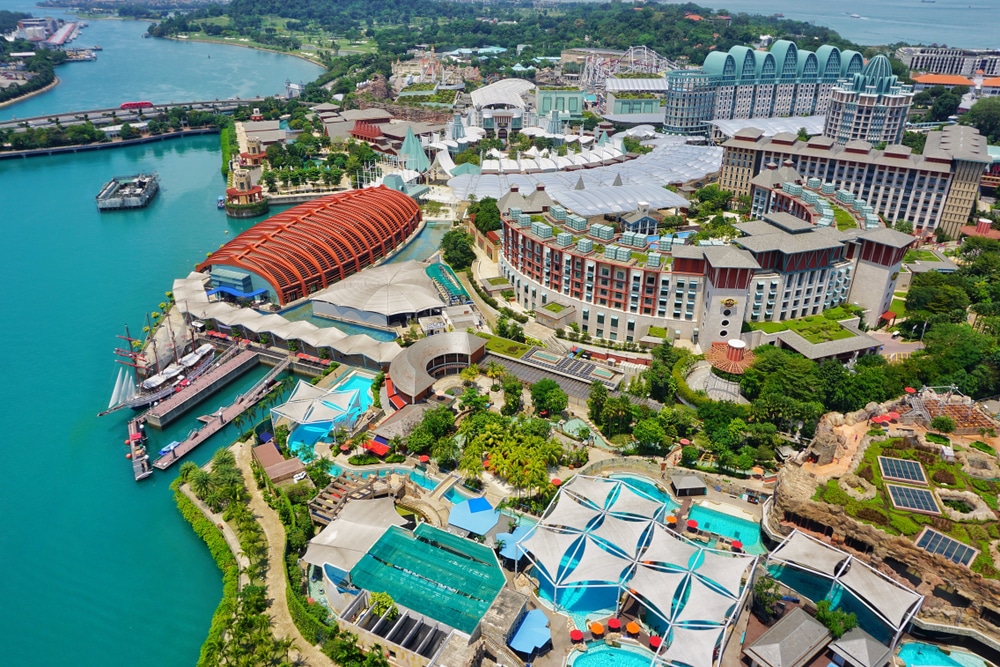
If you’re looking for an island escape in Singapore, Sentosa Island is the perfect destination.
Located just off the southern coast of Singapore, this resort island is home to world-class attractions, stunning beaches, and luxurious hotels.
Enjoy the Island Vibe of Sentosa
As soon as you step foot on Sentosa Island, you’ll be greeted by an island vibe that is hard to resist.
The island offers a wide range of activities and entertainment options for visitors of all ages, from thrilling theme parks and water sports to relaxing spa retreats.
Visit the Iconic Attractions on Sentosa Island
Sentosa Island is home to several iconic attractions that should not be missed.
From the towering Merlion statue to the unique S.E.A.
Aquarium, there is something for everyone to enjoy.
Don’t forget to catch the breathtaking Wings of Time show, which combines lasers, water fountains, and fireworks for a truly mesmerizing experience.
Relax and Unwind at Palawan Beach
If you’re in need of some relaxation, head over to Palawan Beach on Sentosa Island.
With its crystal clear waters, soft sandy beaches, and palm trees swaying in the breeze, it’s the perfect spot to soak up the sun and unwind.
Little India: A Cultural Haven in the Heart of Singapore
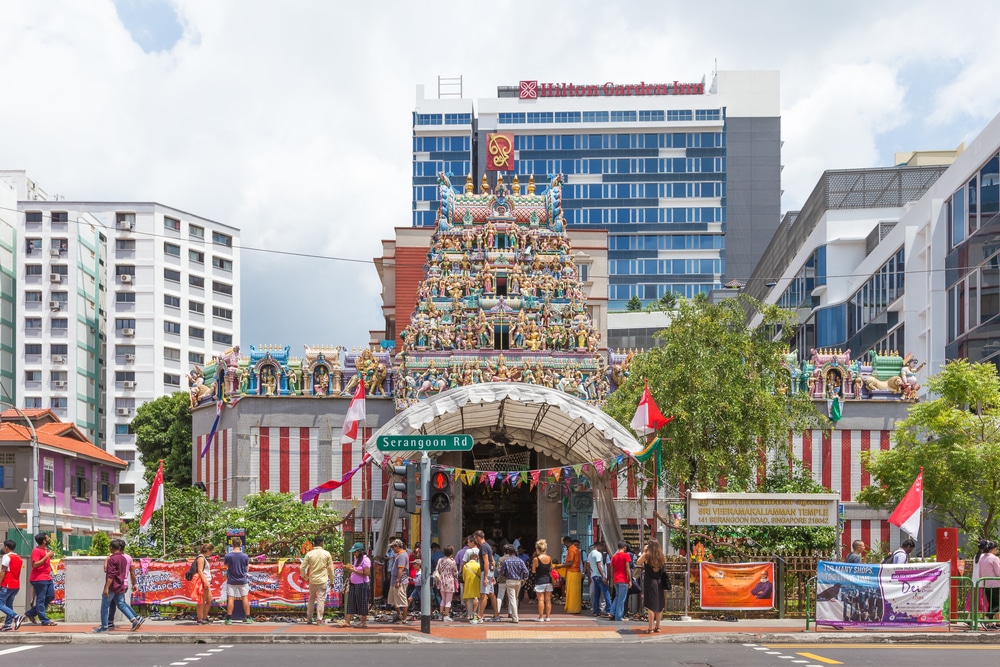
Little India is a vibrant and colorful neighborhood in the heart of Singapore, offering a glimpse into the city’s rich Indian heritage.
This cultural haven is known for its bustling streets, aromatic spices, and stunning Hindu temples.
Immerse Yourself in the Vibrant Culture of Little India
Step into Little India and be transported to a world of vibrant colors, aromatic scents, and lively street life.
Explore the bustling streets of Serangoon Road, where you’ll find a variety of shops selling everything from traditional Indian clothing to intricate jewelry.
Explore the Colorful Streets of Serangoon Road
Serangoon Road is the main artery of Little India, lined with colorful shophouses, Bollywood music stores, and restaurants serving delicious Indian cuisine.
Take a leisurely walk through the streets and immerse yourself in the sights and sounds of this vibrant neighborhood.
Indulge in Authentic Indian Cuisine at Tekka Centre
No visit to Little India is complete without indulging in authentic Indian cuisine.
Head over to Tekka Centre, a bustling hawker center, and try delicious dishes such as biryani, dosa, and butter chicken.
The food here is a true reflection of the diverse culinary traditions of India.
Marina Bay: Iconic Landmarks and Modern Architecture
Marina Bay is undoubtedly one of the most iconic neighbourhoods in Singapore.
It is home to a number of iconic landmarks that have become synonymous with the city-state.
From the majestic Marina Bay Sands to the awe-inspiring Gardens by the Bay, there is no shortage of awe-inspiring sights to discover in Marina Bay.
Iconic Landmarks in Marina Bay
Marina Bay is home to some of Singapore’s most iconic landmarks.
The Marina Bay Sands is a must-visit destination for tourists and locals alike.
With its distinctive architecture and world-class facilities, it is a true masterpiece of modern design.
Another iconic landmark is the Merlion, a mythical creature with the head of a lion and the body of a fish.
It is one of Singapore’s most iconic symbols and a popular spot for tourists.
Modern Architecture in Marina Bay
Marina Bay is renowned for its modern architecture.
The skyline is dotted with futuristic buildings that create a stunning visual spectacle.
From the ArtScience Museum to the Helix Bridge, there is no shortage of architectural wonders to admire in Marina Bay.
The blend of traditional and contemporary designs creates a unique atmosphere that sets Marina Bay apart from other neighbourhoods in Singapore.
Marina Bay Sands: A Must-Visit Destination
No visit to Marina Bay would be complete without a trip to the Marina Bay Sands.
This iconic hotel and entertainment complex offers a wide range of attractions and activities for visitors to enjoy.
Marina Bay Sands is a one-stop destination for entertainment, dining, and relaxation from the world-class casino to the rooftop infinity pool.
Discovering the Hidden Gems of Singapore’s Neighbourhoods
While Marina Bay may be the most well-known neighbourhood in Singapore, there are many other hidden gems waiting to be discovered.
One such gem is the Singapore Botanic Gardens.
This botanical paradise is a haven for nature lovers, with its stunning flora and peaceful atmosphere.
Singapore Botanic Gardens: A Botanical Paradise
The Singapore Botanic Gardens is a must-visit destination for nature lovers.
With its lush greenery and beautiful flowers, it is a peaceful oasis in the heart of the city.
Visitors can take a leisurely stroll through the gardens and admire the stunning displays of tropical flora.
The National Orchid Garden is a particular highlight, with its vast collection of orchids in all shapes, sizes, and colors.
Bukit Merah: A Blend of Tradition and Modernity
Bukit Merah is a neighbourhood that perfectly embodies the blend of tradition and modernity that is characteristic of Singapore.
It is home to a diverse mix of residential areas, commercial buildings, and cultural landmarks.
The neighbourhood has a rich history and is known for its preserved heritage buildings and traditional shophouses.
Tanglin Mall: Shop and Dine in Style
Tanglin Mall is a vibrant shopping centre located in the heart of Tanglin.
It is a popular destination for locals and tourists alike, offering a wide range of shops and restaurants.
From high-end fashion boutiques to local eateries, Tanglin Mall has something for everyone.
Whether you are an avid shopper or a food lover, this shopping centre is a must-visit.
Family-Friendly Neighbourhoods in Singapore: A Guide for Parents
Singapore is a great city for families, with its safe and welcoming environment.
There are several family-friendly neighbourhoods in Singapore that offer a range of amenities and facilities for parents and children.
Choosing the Right School for your Children
One of the most important factors to consider when choosing a family-friendly neighbourhood is the availability of good schools.
Singapore has a wide range of international schools that offer a high standard of education.
Some of the top international schools in Singapore include Invictus International School, Tanglin Trust School, and the Singapore American School.
Telok Blangah: A Haven for Families
Telok Blangah is a neighbourhood that offers a range of amenities for families.
It is home to a number of parks and playgrounds, making it a great place for children to play and explore.
The neighbourhood also has a community centre where parents can participate in activities and meet other families.
Community Centres in Family-Friendly Neighbourhoods
Many family-friendly neighbourhoods in Singapore have community centres that offer a range of programs and activities for families.
These centres provide a space for families to come together and engage in various recreational, educational, and social activities.
It is a great way to build a sense of community and meet other families in the neighbourhood.
Tranquil Retreats: Singapore’s Most Picturesque Parks and Gardens
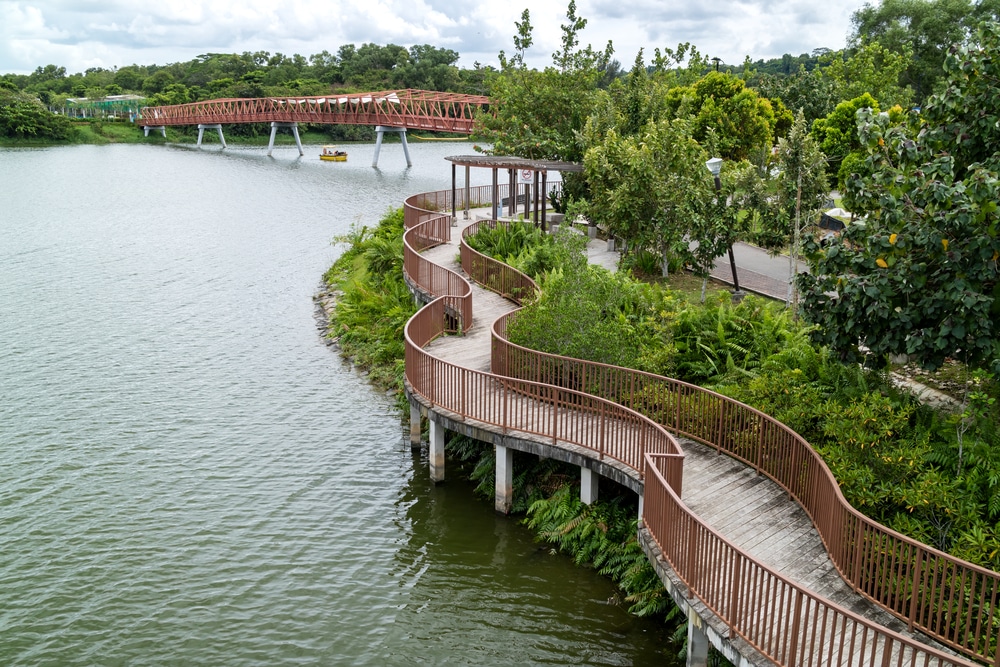
For those looking to escape the hustle and bustle of the city, Singapore offers a number of tranquil retreats in the form of parks and gardens.
These green spaces provide a peaceful and serene environment where visitors can relax and rejuvenate.
Newton Food Centre: Indulge in Local Delights
Newton Food Centre is a popular hawker centre located in the Newton area.
It is known for its dizzying array of local food stalls that offer a wide range of Singaporean and international cuisines.
From char kway teow to satay, visitors can indulge in a wide variety of local delights.
Outram Park: Nature at its Best
Outram Park is a neighbourhood that offers nature at its best.
It is home to several parks and nature reserves, including the popular Pearl’s Hill City Park.
Visitors can take a leisurely stroll along the park’s trails and enjoy the serene surroundings.
The park also offers stunning views of the city skyline, making it a great spot for photography enthusiasts.
Punggol Park: Serenity by the Waterfront
Punggol Park is a hidden gem located in the northeastern part of Singapore.
It is a serene park that offers a peaceful retreat away from the busy city life.
The park is surrounded by lush greenery and has a beautiful waterfront, making it a great place for picnics and leisurely walks.
Choosing the Ideal Neighbourhood: Factors to Consider When Relocating in Singapore
When it comes to choosing the ideal neighbourhood in Singapore, there are several factors that you should consider.
These factors will vary depending on your personal preferences and lifestyle.
From the vibrant heritage of Koon Seng Road to the natural beauty of Jurong Lake Gardens, Singapore has a neighbourhood to suit every taste.
Koon Seng Road: Preserving Heritage and Charm
Koon Seng Road is a neighbourhood that is known for its preserved heritage and old-world charm.
The area is lined with beautiful colonial houses that date back to the early 20th century.
Walking along the streets of Koon Seng Road feels like stepping back in time, with its well-preserved architecture and quaint atmosphere.
Find the Right International School for your Kids
If you have children, one of the most important factors to consider when choosing a neighbourhood is the availability of good international schools.
Singapore has a wide range of international schools that offer a high standard of education.
Some of the top international schools in Singapore include Invictus International School, Tanglin Trust School, and the Singapore American School.
Exploring Jurong Lake Gardens: Nature’s Playground
Jurong Lake Gardens is a unique neighbourhood that offers a blend of nature and urban living.
The neighbourhood is home to a sprawling park and garden complex that offers a wide range of recreational activities for both children and adults.
From the stunning landscapes to the exciting play areas, Jurong Lake Gardens is a nature lover’s paradise.
Conclusion
In conclusion, Singapore’s neighborhoods offer a diverse range of experiences, from exploring the rich heritage and culture of Little India and Chinatown to indulging in the vibrant dining scenes of Tiong Bahru and Kampong Glam.
You can also immerse yourself in the laid-back lifestyle of Tiong Bahru or shop till you drop at the iconic Orchard Road.
If you’re looking for greenery and exclusive living, Bukit Timah is the perfect choice, while Sentosa Island offers an island escape with stunning beaches and world-class attractions.
Don’t forget to discover the hidden gems of Singapore’s neighborhoods, such as the Singapore Botanic Gardens and the preserved heritage buildings of Bukit Merah.
For family-friendly experiences, Telok Blangah provides a haven with its parks and playgrounds, and there are excellent international schools available in various neighborhoods.
This is just a glimpse of what Singapore’s neighborhoods have to offer.
To further explore the beauty and uniqueness of each district, be sure to check out our other blog articles dedicated to specific neighborhoods.
Whether you’re a food enthusiast, history buff, shopaholic, or nature lover, Singapore’s neighborhoods have something for everyone to enjoy.
Start planning your visit today and experience the diversity and charm of Singapore’s districts!
Frequently Asked Questions
What are some popular neighbourhoods in Singapore?
Some popular neighbourhoods in Singapore are Balestier, Clarke Quay, and Delhi.
What makes these neighbourhoods popular?
These neighbourhoods are popular because they offer a blend of heritage, charm, and trendy places to visit.
Can you provide more details about the Balestier neighbourhood?
Balestier is a district in Singapore that is known for its rich heritage and unique blend of old and new properties.
It is located within easy reach of the city and offers a quieter and slower-paced lifestyle compared to other bustling districts in Singapore.
What are some highlights of the Balestier neighbourhood?
Some highlights of the Balestier neighbourhood include its historic shophouses, vibrant food scene, and the famous Balestier Road where you can find delicious local delicacies.
Are there any specific places of interest in Clarke Quay?
Clarke Quay is a vibrant riverside quay located in the Singapore River Planning Area.
It is known for its bustling nightlife, trendy restaurants, and entertainment options.
Some popular places to visit in Clarke Quay include Zouk, a famous nightclub, and a variety of dining establishments along the river.
Is the Clarke Quay district suitable for families?
While Clarke Quay is mostly known for its nightlife, it still offers family-friendly activities and attractions.
Families can enjoy river cruises, explore the nearby museums, and have fun at the trampolines and obstacle courses available in the area.
What are the advantages of living in the Delhi neighbourhood?
The Delhi neighbourhood is known for its cultural and historical significance.
It offers a unique blend of Singaporean and Indian heritage, making it a fascinating place to live for those who appreciate diverse cultures and flavors.
Are there any downsides to living in these neighbourhoods?
One downside of living in popular neighbourhoods like Balestier, Clarke Quay, and Delhi is that they can be more crowded and busy compared to quieter suburbs.
Additionally, the property prices in these areas may be higher compared to other parts of Singapore.
Can you provide information on the accessibility of these neighbourhoods?
These neighbourhoods are well-connected to the public transportation system in Singapore.
They are within walking distance of MRT stations, making it convenient for residents to travel around the city.
Are there any other neighbourhoods in Singapore that offer a similar mix of heritage and modernity?
Yes, there are several places in Singapore that offer a similar mix of heritage and modernity alongside vibrant food scenes.
Some examples include Chinatown, Kampong Glam, and Little India.
Is it easy to find HDB properties in these neighbourhoods?
Yes, HDB properties can be found in these neighbourhoods, providing a range of housing options for residents.


